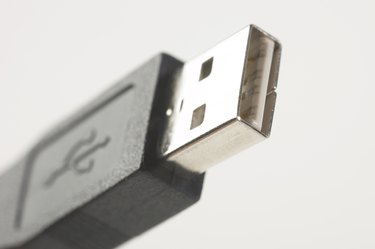
USB cables are a common way to connect peripherals to computers and other electronic devices such as game consoles. While USB cables come in a variety of shapes and sizes, the function is typically the same. Capable of powering or recharging the very device they connect to your computer, they're very practical. Testing a USB cable's functionality is easy to do and only takes a few minutes if you have a device to test it with.
Step 1
Check the USB cable for any tears or fraying. A damaged cable is dangerous and must not be used under any circumstances.
Video of the Day
Step 2
Plug the PC end of the USB cable into any of your PC's USB ports. This end is rectangular in shape, and the side of the cable with the line running from the center always faces downward.
Step 3
Connect the other end of the USB cable to a compliant USB device that has the appropriate input for the cable. Options include external hard drives, cameras, certain game controllers, and other PC compatible peripherals.
Step 4
Power on your PC. All modern-day PCs with USB support automatically install the drivers needed to run the peripheral when connected. If the USB cable is functioning properly, it will power on with your computer or shortly after it turns on. You may get a message telling you that your computer is installing software drivers for the device---this is normal.
Step 5
Check to see if the device works as it normally would. If it doesn't, test the cable on another peripheral to make sure it is the cable and not the device. If this doesn't work, try another USB port on your PC to make sure your PC isn't malfunctioning before calling it quits and tossing the cable to the curb.
Video of the Day